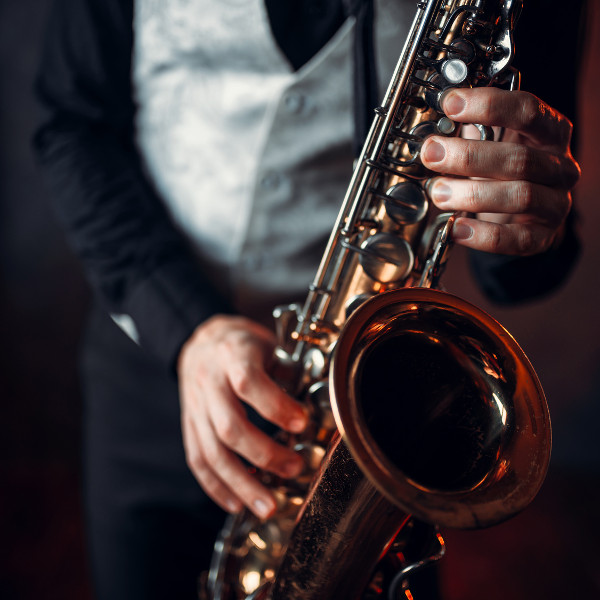

This type of music flourished through the early 1930s, although there was little mass audience for it until around 1936.

Swing music began appearing in the early 1930s, distinguished by a more supple feel than the more literal 4/4 of earlier jazz and a walking bass - Walter Page is often credited with developing this, though isolated earlier examples exist (eg by Wellman Braud on Ellington's Washington Wabble from 1927). This was the largest big band ever led by a female bandleader. Gloria Parker, Princess of the Marimba, conducted the 21-piece Swingphony whose performances were broadcast nationally from the Kelly Lyceum Ballroom in Buffalo, New York. Big band remotes on the major radio networks spread the music from ballrooms and clubs across the country during the 1930s and 1940s, with remote broadcasts from jazz clubs continuing into the 1950s on NBC's Monitor. Meanwhile in Kansas City and across the Southwest, an earthier, bluesier style was developed by such bandleaders as Benny Moten and, later, by Jay McShann and Jesse Stone. In the former, a sophisticated approach to arranging predominated, first in the work of Don Redman for the Fletcher Henderson band, later in the work of Duke Ellington for his Cotton Club orchestra, and Walter 'Foots' Thomas for Cab Calloway's.Įarl Hines became the star of Chicago with his Grand Terrace Cafe band and began to broadcast live from The Grand Terrace nightly coast-to-coast across America. The three major centres in this development were New York City, Chicago and Kansas City. The few recordings made in this form of jazz were labelled race records and were intended for a limited urban audience. This form of music never gained the popularity of the sweet dance form of jazz. Towards the end of the 1920s, a new form of Big Band emerged which was more authentically "jazz," in that more space was given to improvised soloing.

Lewis and her band, Ben Bernie's band "Ben Bernie and All the Lads", and Roger Wolfe Kahn's band were filmed by Lee De Forest in his Phonofilm sound-on-film process in 1925, in three short films which are now in the Library of Congress film collection. There were also "all-girl" bands such as "Helen Lewis and Her All-Girl Jazz Syncopators". Although unashamedly commercial, these bands often featured front-rank jazz musicians - for example Paul Whiteman employed Bix Beiderbecke and Frankie Trumbauer. Many of these artists changed styles or retired after the introduction of swing music. Typical of the genre were such popular artists as Paul Whiteman, Ted Lewis, Harry Reser, Leo Reisman, Abe Lyman, Nat Shilkret, George Olsen, Ben Bernie, Bob Haring, Ben Selvin, Earl Burtnett, Gus Arnheim, Henry Halstead, Rudy Vallee, Jean Goldkette, Isham Jones, Roger Wolfe Kahn, Sam Lanin, Vincent Lopez, Ben Pollack, Shep Fields and Fred Waring.

Orchestras tended to stick to the melody as it was written and vocals would be sung sweetly (often in a tenor voice) and in tune with the melody. The dance form of jazz was characterized by a sweet and romantic melody. At that time they usually played a sweet form of jazz that involved very little improvisation, which included a string section with violins, which was dropped after the introduction of swing in 1935. Beginning in the mid-1920s, big bands, then typically consisting of 10–25 pieces, came to dominate popular music. There are two distinct periods in the history of popular bands.


 0 kommentar(er)
0 kommentar(er)
